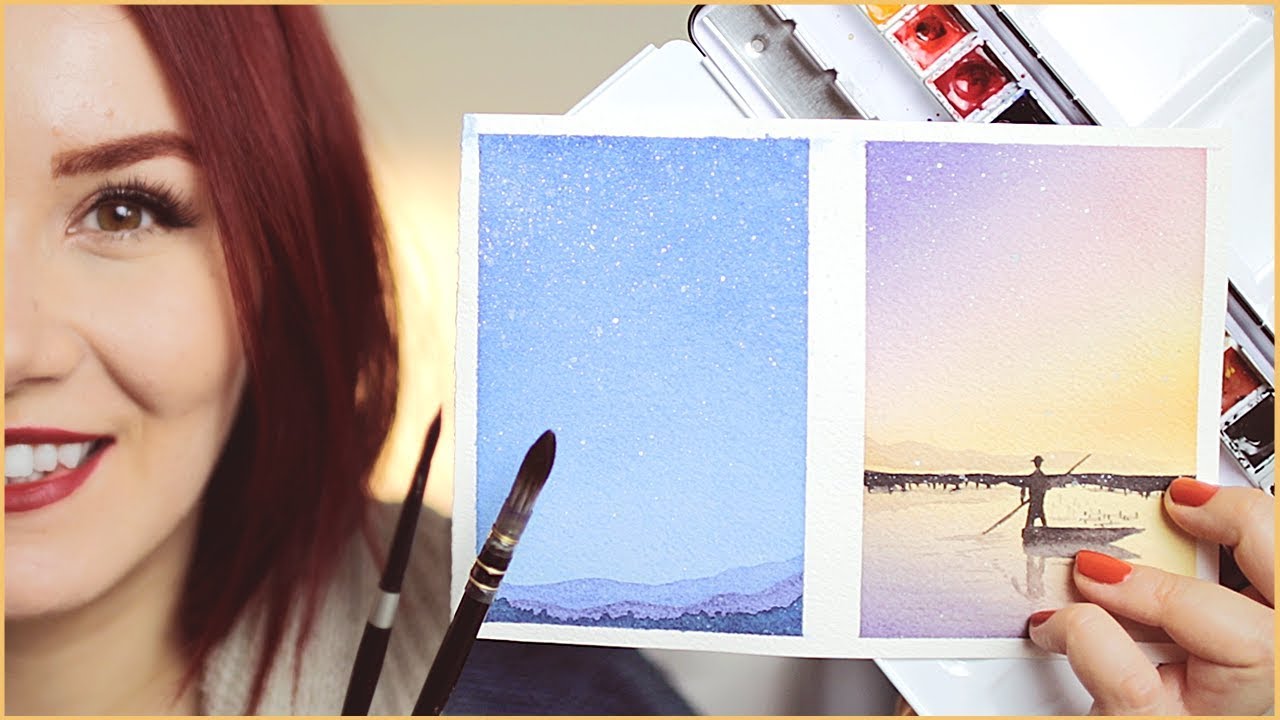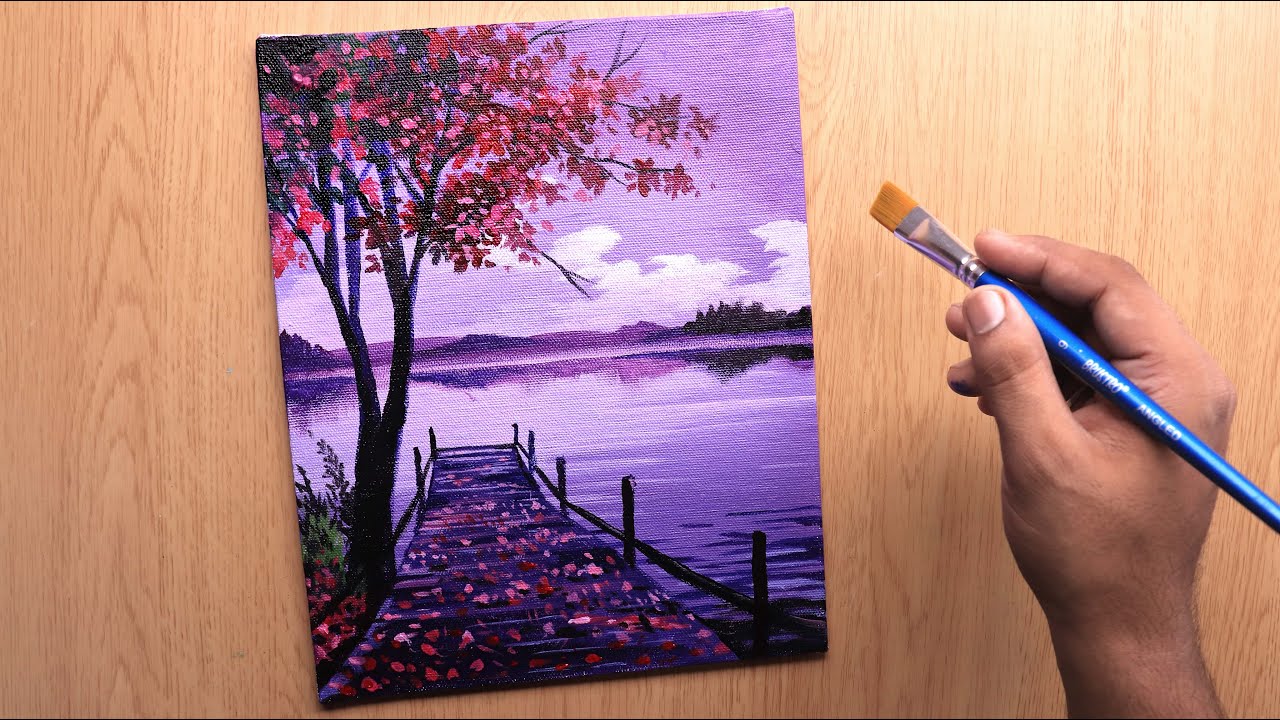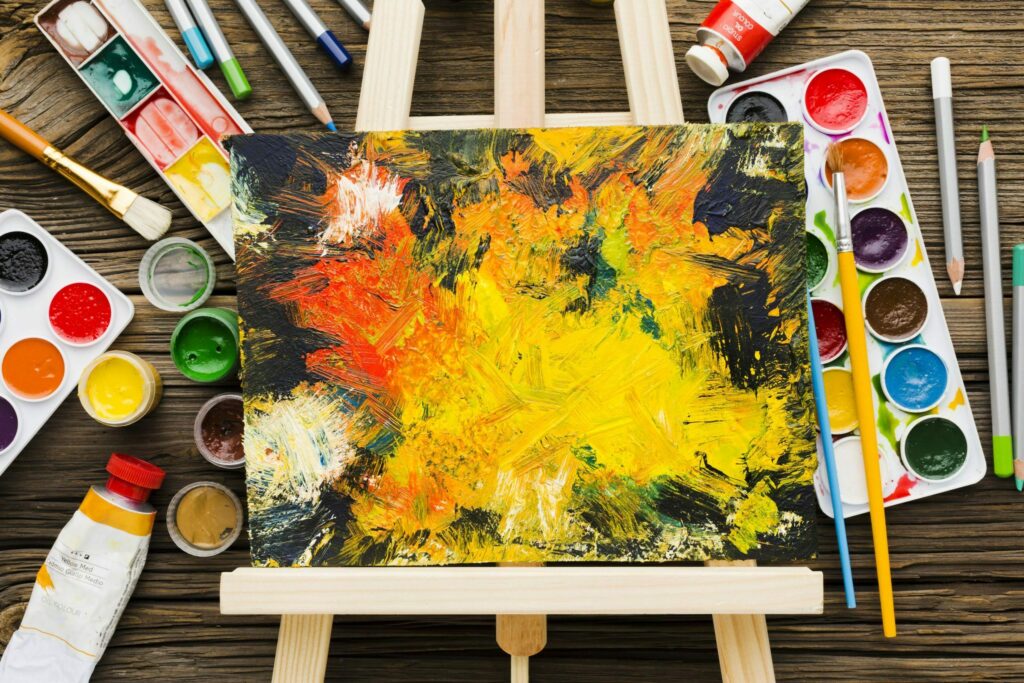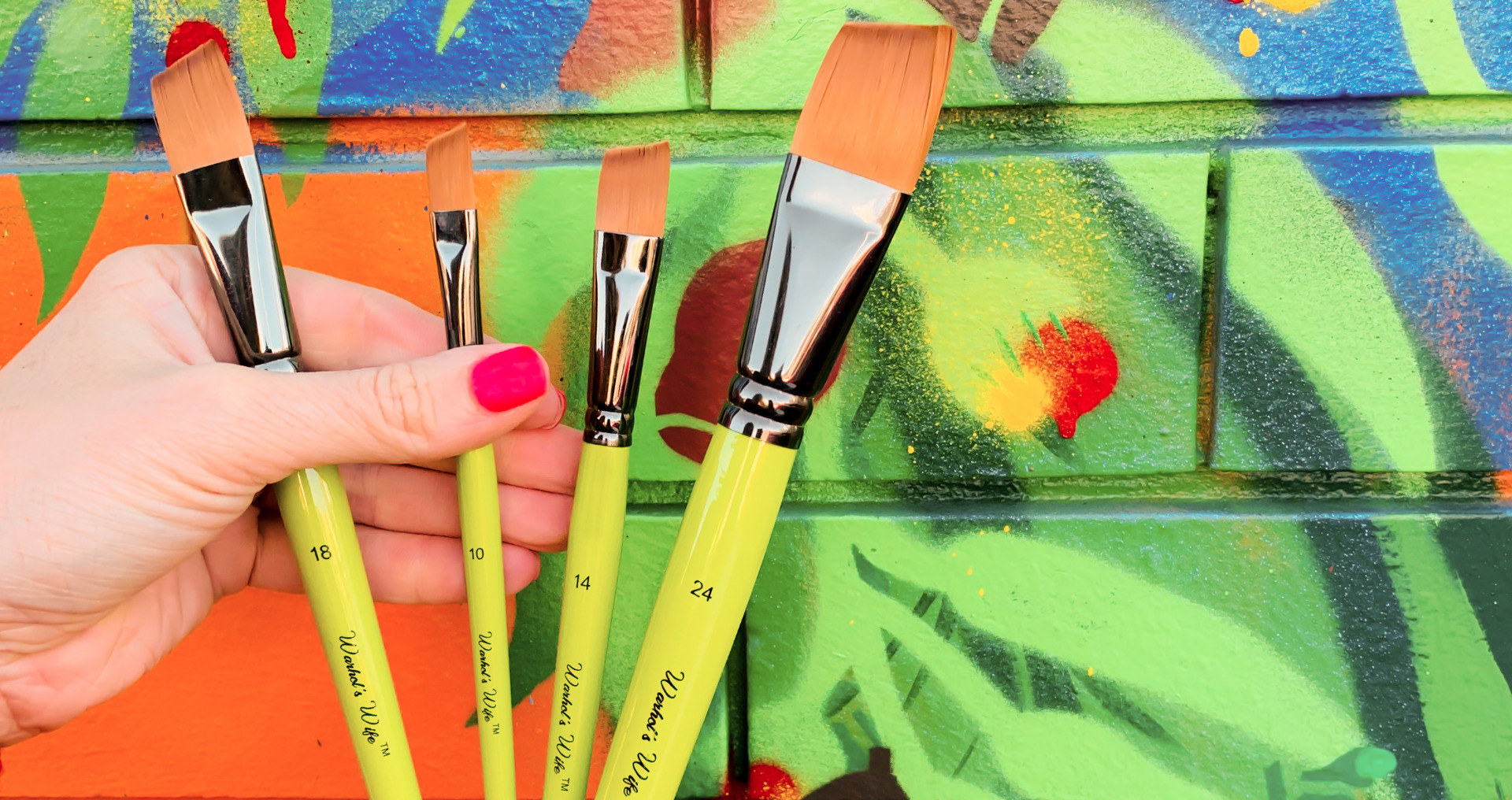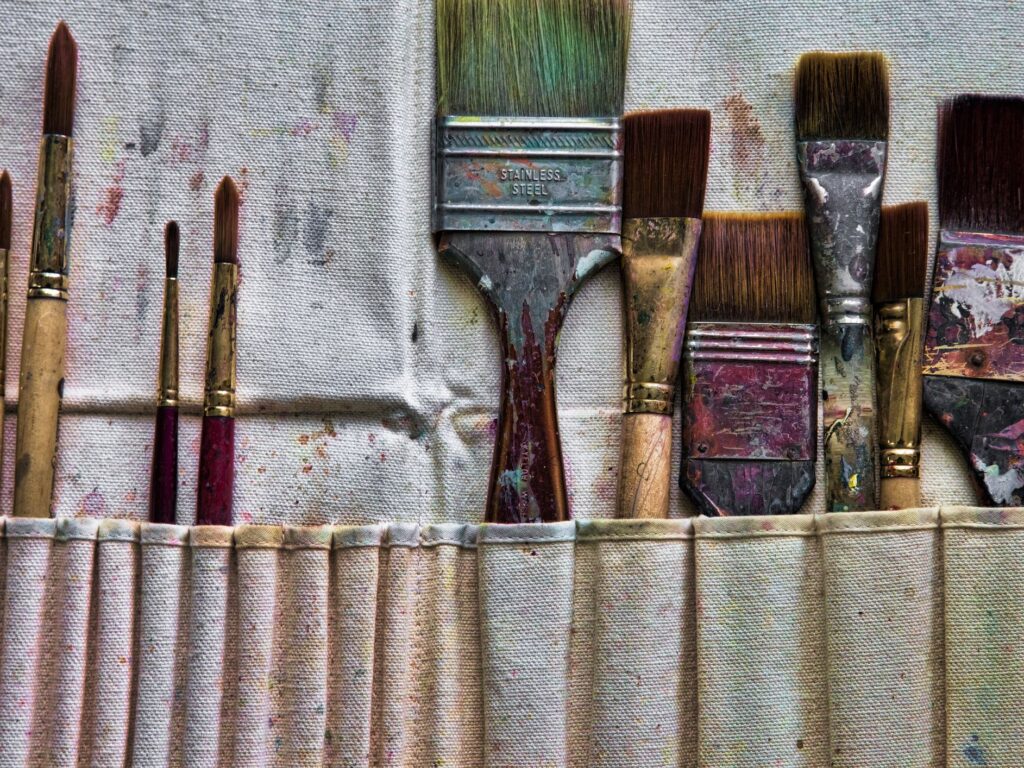Acrylic paint is available in a wide range of hues on the market today. Choosing which acrylic paint to buy might be challenging for a newbie painter. Here are some ideas to help you decide what to buy, as well as some facts about acrylic paint’s composition. Given my prior expertise as an acrylic painter, the majority of this post will focus on acrylic paint; nevertheless, the fundamental concepts apply to all mediums.
Acrylic paint is well-known for its rapid drying time in the conventional sense of the term (often within minutes). On the other hand, some collections, such as Golden Open and Artelier Interactive, are designed to be used again.
Indeed, the Artelier series pioneered the concept of manipulating acrylic paint for up to 24 hours after it was applied to a surface.
After drying, there is no question that ranges like the ones I’ve described will stay “open” and useful for a longer amount of time than standard acrylics and will also be reworkable. Acrylic painting provides a lot of advantages for some types of artists, notably those who often blend colors on the canvas or who like to reflect on and adjust their work after it has been done.

By utilizing a stay-wet palette, newbies may easily prevent their acrylic paint drying out on the palette, which will save them time and stress in the long run.
As a consequence, for the foreseeable future, my advice is to keep an eye on the ‘open’ ranges. Allow yourself to try one or two tubes and compare them to the prepared standard sets.
The fact that you saved money on the project does not imply that your painting method was ineffective. If you believe they will provide you with a considerable advantage, you may opt to acquire them over time (or buy them in bulk) when your financial means allow.
When it comes to acrylic paint, the landscape is continuously changing, and it’s easy to lose track of which colors do which jobs and to rapidly regret acquiring a new item merely because it has an enticing name or a “must have” feature you didn’t think you needed.
For the time being, I recommend starting with a few conventional acrylic paint to ease yourself into the process.
While you may acquire one or two colors that you dislike, they will always be useful, whether for practice or if you wish to acrylic paint in monochrome in order to hone your tonal value skills.
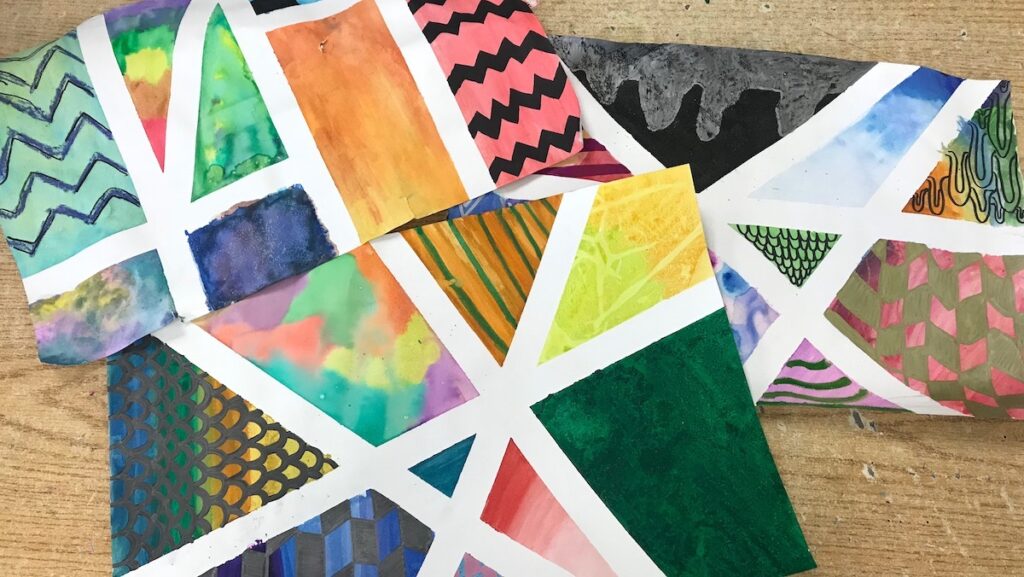
What Should You Do with Your Hard-Earned Cash?
Consider the following when deciding which colors to purchase: For the majority of beginning painters, a black and white camera and some paper are all that is required, as they do not have a lot of money to invest in their equipment. You can experiment with various shades of grey and even create some black-and-white paintings to gain an understanding of how to work with a variety of value contrasts and to build confidence in your abilities.
As you go, include other hues into your design, such as cadmium yellow, permanent rose, ultramarine blue, and burnt umber. If you have the financial means, I recommend beginning with a simple set like this one. As your ability with acrylic painting improves, you may choose to enhance your supply of basic colors with more expensive professional paint.
Retailers’ Suggestions
The majority of well-known companies now sell directly via Amazon, which is useful if you are unable to visit a physical shop. Additionally, there are a few specialist online art dealers that provide an exceptional level of service and variety to their online clientele.
If you reside in a city with a diverse array of art shops, though, make a point of visiting them often. The experience of physically seeing and experiencing the things you’re contemplating buying may be worth the journey in and of itself, and you may also be able to negotiate a price comparable to that offered by online sellers. Learn more easy acrylic paint tips.

Conclusion
As previously said, there are several varieties of artist acrylic paint accessible today. Choosing which acrylic paint to buy might be challenging for a newbie painter. Here are some ideas to help you decide what to buy, as well as some facts about acrylic paint’s composition. Given my prior expertise as an acrylic painter, the majority of this post will focus on acrylic paint; nevertheless, the fundamental concepts apply to all mediums.
Acrylic painting does not need a large financial investment. Numerous brands are available, with many of them offering almost equal quality and value, especially at the entry-level and starter set price ranges.
As previously said, begin with a small palette of basic hues to gauge how things will work out. As a direct consequence of this practice, you will develop a heightened awareness of the colors that may emerge from the very few mixes that you will get used to producing.
Avoiding the temptation to incorporate the contents of approximately thirty separate tubes into each painting because you believe you need to demonstrate that the tubes were worth the money you spent on them will save you money, but more importantly, your paintings will have a genuine sense of balance and harmony.
The simplest and fastest way to choose the kind of acrylic paint to buy is to evaluate the painting style you want to utilize. Are you a fan of bold brushstrokes and plenty of texture, or do you like to use delicate color washes to build up the color in your painting?
Which style are you a fan of? Consider obtaining a sample of each kind of tube and doing an experiment with them. You’ll ultimately develop your own own style and brand of acrylic paint that others will recognize. Please feel free to leave any questions or comments in the box given below. I would be delighted to get your letter.
Final thoughts
Acrylic paint are available in a wide range of hues on the market today. Choosing which acrylic paint to buy might be challenging for a newbie painter. Here are some ideas to help you decide what to buy, as well as some facts about acrylic paint’s composition.

